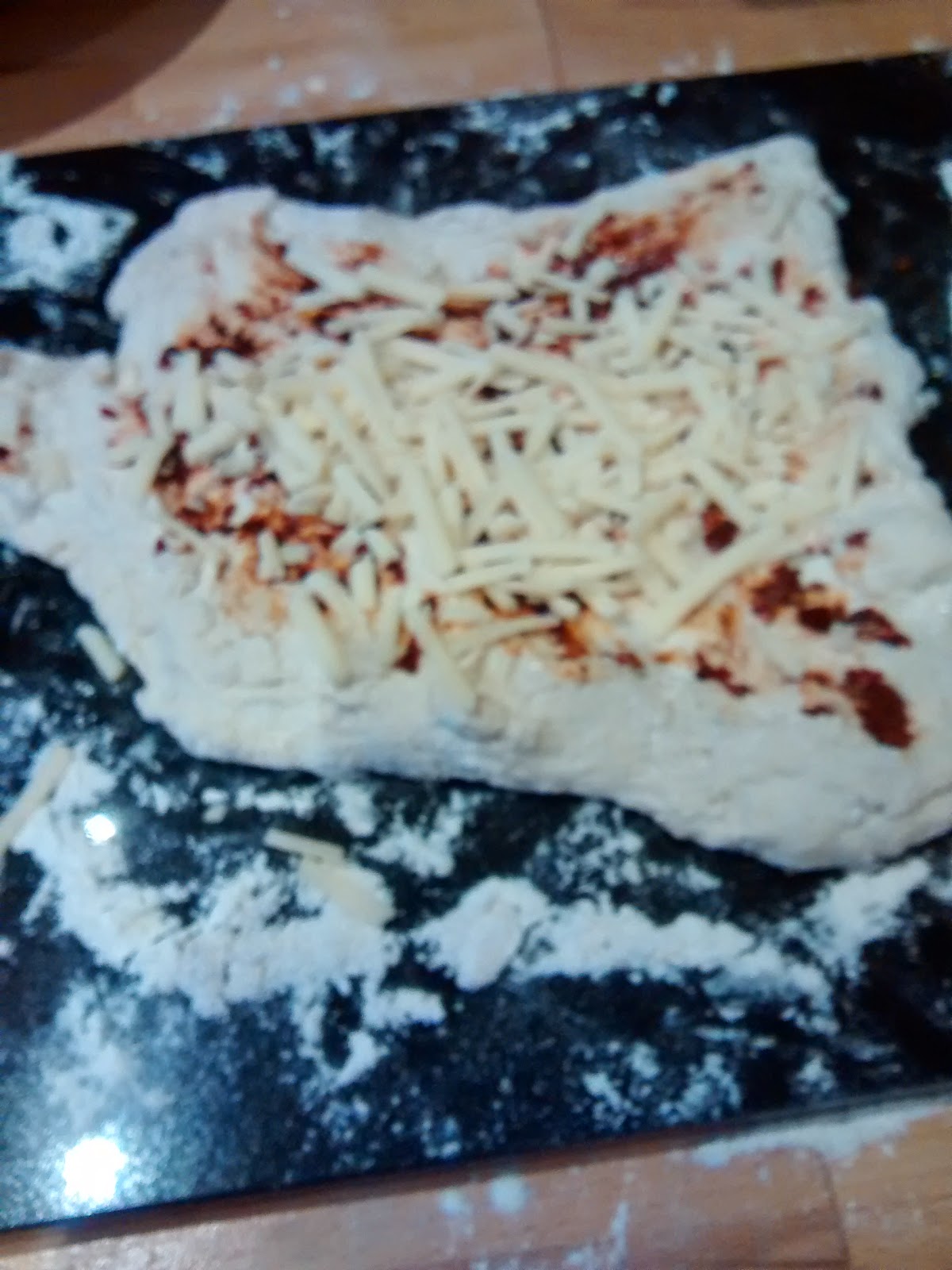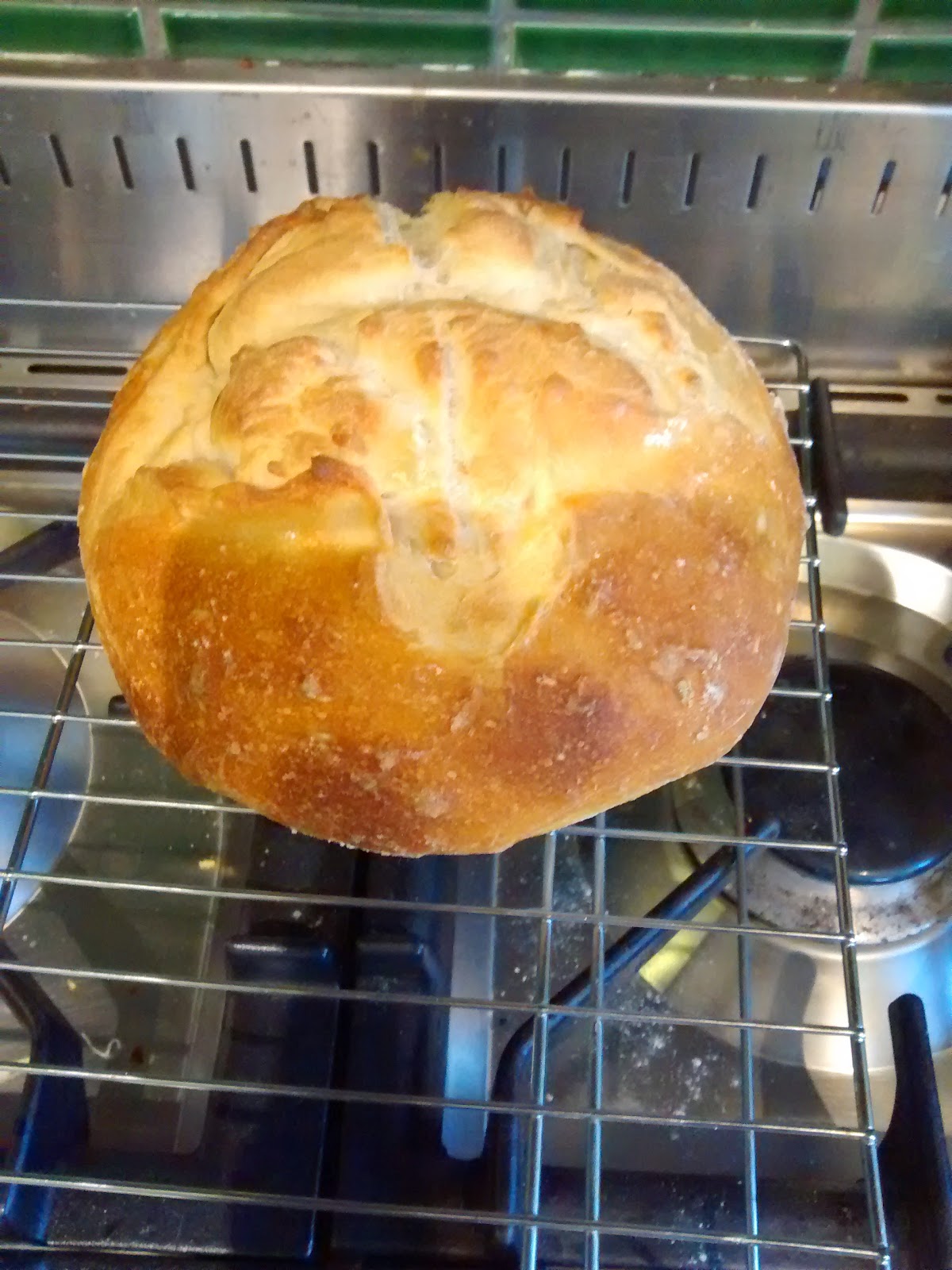However, I think I have finally got it!
It's taken several batches of dough of different recipes and a variety of ways to bake it, in fact my kitchen has been more like a laboratory this half term!
We have enjoyed cheese and chilli
Cheese and marmite (no picture, sorry)

So what is the secret to a crispy crust? Well, and this is in 'my' oven, bear in mind you are playing with yeast and chemistry, so the alteration of just one variable, could mess the whole thing up....
ice cubes and olive oil!
Throw a few ice cubes onto the floor of your oven just as you put in your bread so that you trap in some steam and baste your loaf with olive oil. Also, make sure your oven is hot!
If your crust looks brown and crisp, you will know for sure if you've hit the jackpot if your crust continues to snap and crackle when it's outside the oven.
So here are the recipes that I have used for successful bread making. Enjoy
24 floz water
0.35 oz yeast
1 tablespoon salt
2 lbs strong bread flour
semolina or cornflour for dusting
ice cubes (around 10)
olive oil
The water needs to be a little warmer than body temperature and pour it into a large mixing bowl.
Mix in the yeast and salt, it doesn't all have to dissolve.
Add all the flour in one go.
Bring it together with either your hands or a wooden spoon.
DON'T KNEAD it!!
It is quite a sticky and wet dough and you may just need to press together the flour that gets missed. Make sure it is all pressed together otherwise you'll have lumps of flour in your bread...not nice!
It should be all wet and not take long to achieve.
Cover the container with a clean tea towel and leave to rise for a couple of hours.
Then once it's risen, cover your container with clingfilm but leave a little edge up so the gas can escape and put it in the fridge. It can be left for up to 14 days in the fridge or you can use it any time after the initial 2 hour rise.
Yes, I know, no knead and then into a 'cold' fridge where yeast needs to rise!
This is right!
When you come to use it, it will be sticky but works better straight from the fridge. Cut a section off to use and dust down your board and an upturned baking tray with flour.
Gently mould your section of dough into a small round ball, alternatively put it into a proving bowl. Allow it to stand for around 40 minutes. It won't rise much, but don't worry, it will rise in the oven.
Whilst this is going on, you need to heat your oven to around 200degrees for at least 20 - 30 minutes.
If you have a baking stone, pre heat that for at least 20 - 30 minutes before you want to use it.
When your oven is hot enough, and your loaf has stood, get a small amount of olive oil and a teaspoon of semolina.
Take your baking stone out of the fridge, lightly dust with flour (it will be VERY HOT!)
Put your loaf onto the stone, take a brush and lightly brush a very sharp knife with olive oil (it helps it to cut easier), then slice a deep cross on your bread.
Take the brush and brush over a thin coating of olive oil and then sprinkle semolina over your bread, this helps the crusty feel.
Now you need your ice cubes, take a handful and open your oven, throw them onto the oven floor and, at the same time, put your bread in and close the door.
This is where you wait!
It should take around 20 - 30 minutes to look crisp and brown.
I then take it out, tap the bottom and it's often a little soft due to the stone, so I just crisp it up by popping it back in for 5 further minutes directly on the shelf.
This should be pretty failsafe to get you that crisp, baker-made hand crafted bread that you always dreamed of!
I also experimented with putting a broiler of water on the floor of the oven as well as the ice cubes to ensure the steam continued. I'm not sure the broiler created as much steam as the ice cubes, but some of this is trial and error.
Good luck and hope you enjoy it!





No comments:
Post a Comment